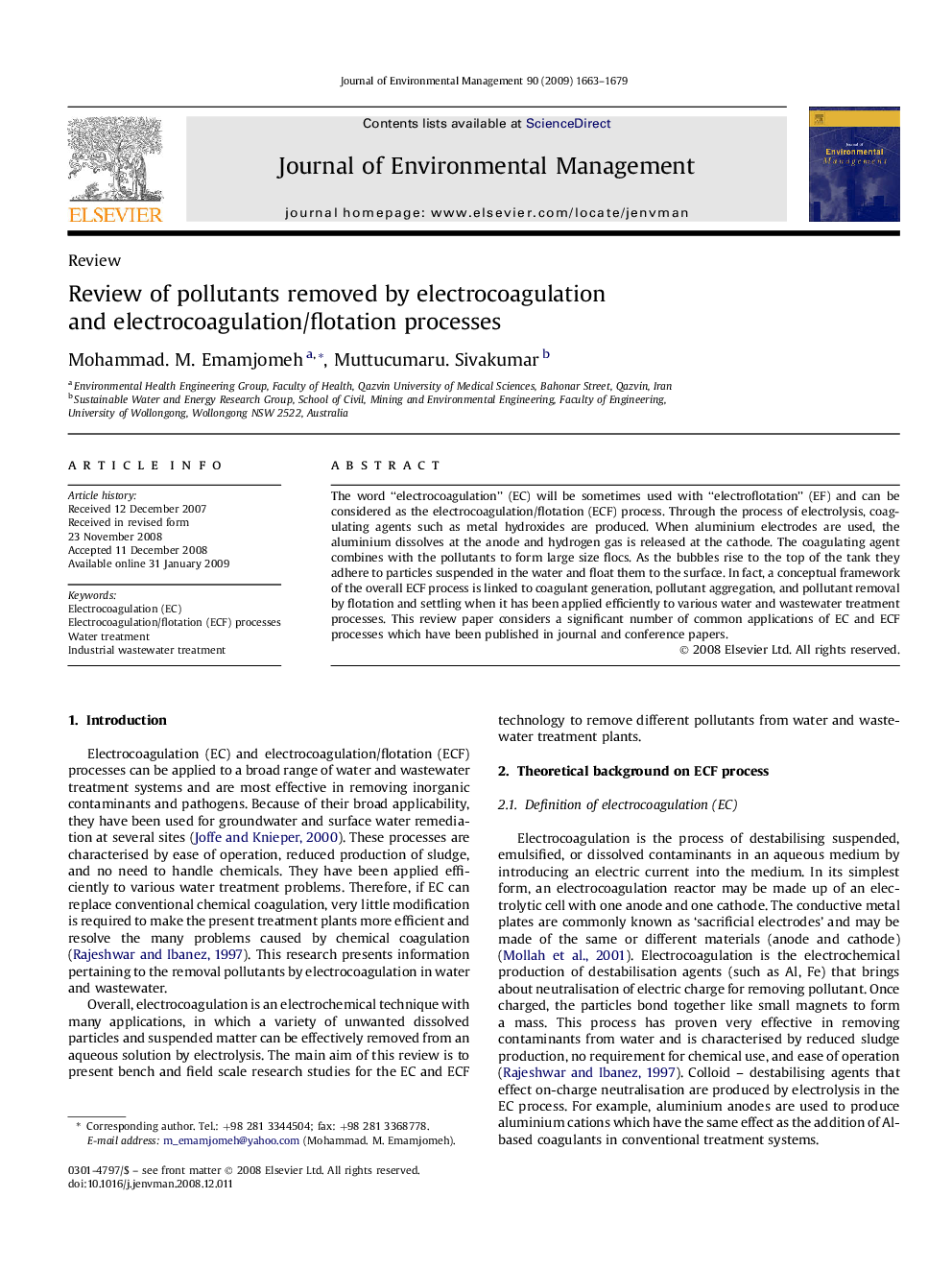| Article ID | Journal | Published Year | Pages | File Type |
|---|---|---|---|---|
| 1057358 | Journal of Environmental Management | 2009 | 17 Pages |
The word “electrocoagulation” (EC) will be sometimes used with “electroflotation” (EF) and can be considered as the electrocoagulation/flotation (ECF) process. Through the process of electrolysis, coagulating agents such as metal hydroxides are produced. When aluminium electrodes are used, the aluminium dissolves at the anode and hydrogen gas is released at the cathode. The coagulating agent combines with the pollutants to form large size flocs. As the bubbles rise to the top of the tank they adhere to particles suspended in the water and float them to the surface. In fact, a conceptual framework of the overall ECF process is linked to coagulant generation, pollutant aggregation, and pollutant removal by flotation and settling when it has been applied efficiently to various water and wastewater treatment processes. This review paper considers a significant number of common applications of EC and ECF processes which have been published in journal and conference papers.
